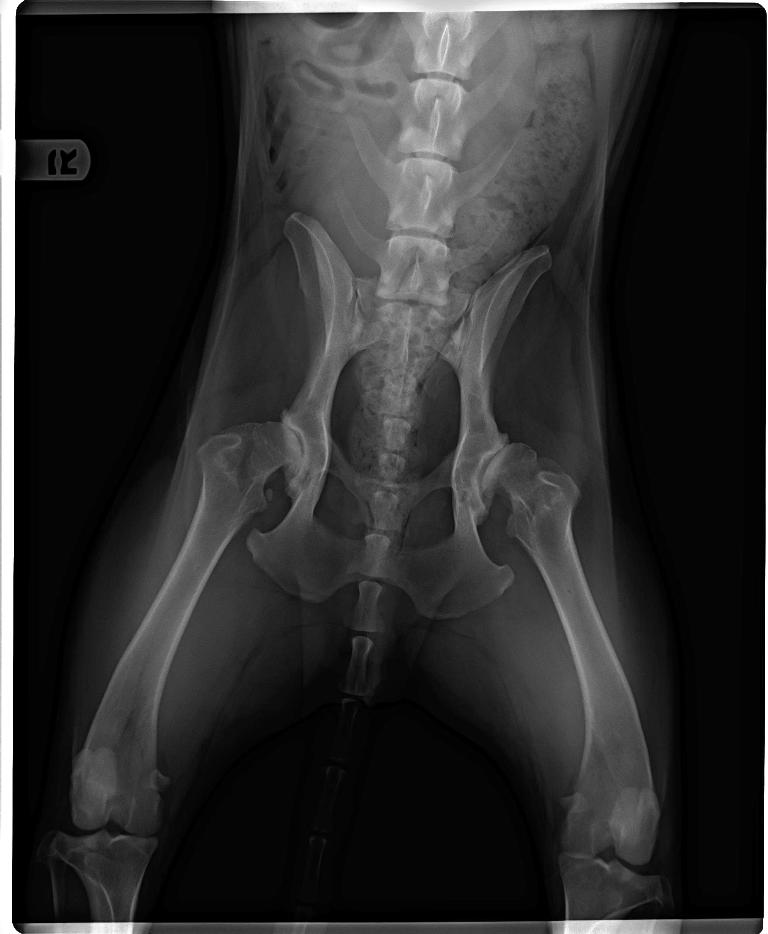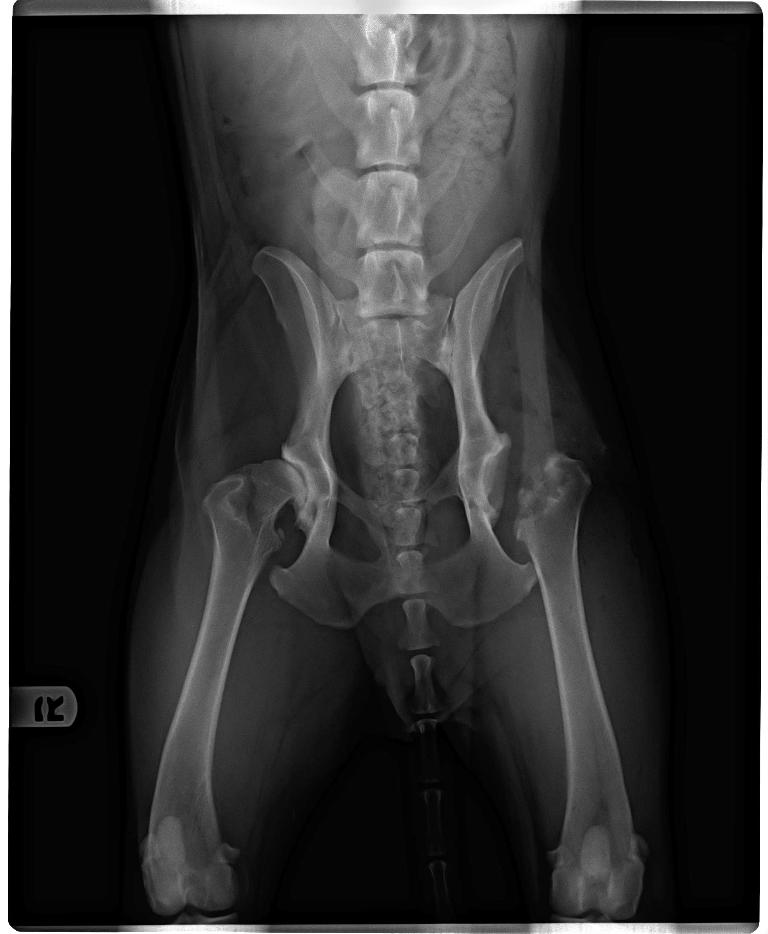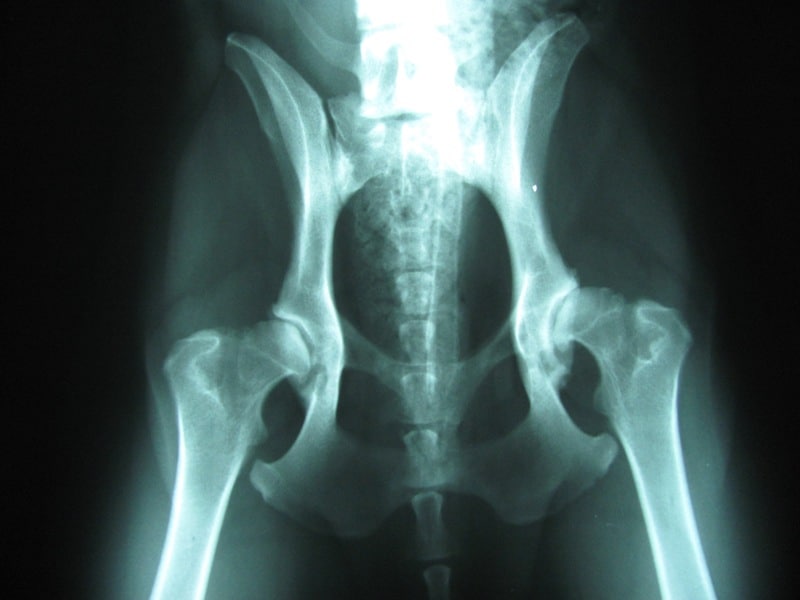Understanding Hip and Elbow Dysplasia in Dogs
There are two genetic diseases you may already be aware of that are common in dogs that are the result of improper breeding. They are known as hip and/or elbow dysplasia.
You may come across these diseases when getting a puppy that is the result of carelessly selecting two adult dogs – who are not genetically sound in the first place – to reproduce. Additionally, it can occur if you acquire a dog from people who are not professionals when it comes to breeding dogs.
Each year, people buy puppies (sometimes from puppy mills) that have these issues, and breeders continue to breed those two parents – even though they possess genes that are likely to pass onto their offspring and cause health problems further down the road for the dog.


Elbow and hip dysplasia are synonymous – except for where they occur on the dog. One is in the hip joint and the other is in the elbow joint.
Dysplasia can occur in large breeds and small breed dogs, but it tends to be more prevalent in the larger breeds of dogs. Some breeds are more susceptible to getting these diseases, such as German Shepherds, Labrador Retrievers and Golden Retrievers. It is therefore best to do your homework and research the parents of the dog you are looking to get and the breeder you are looking to buy from, to help ensure that you are making the right decision.
The normal hip joint in a dog should allow free movement and rotation. Hip dysplasia is poor fitting of the femoral head that goes into the joint socket of the hip. These changes in the joint cause damage, inflammation, pain, increased volume of synovial fluid, and enlargement of the ligament that attaches the femoral head to a part of the hip (acetabulum). As a result, this can cause damage and abnormalities to the bone, weakening of the entire joint and pain.
Elbow dysplasia is caused by growth disturbances in the dog’s elbow joint. There are several theories as to what can cause this disease – such as genetics, defects in cartilage growth, trauma, diet and exercise. Any of these causes leads to a mismatch of growth in the two bones that make up the fore leg (radius and ulna) that are between the elbow and the wrist.
Any irregularities in the growth of these bones can lead to fractures of the coronoid process, or less commonly, failure of attachment of the ulna to the anconeal process. Once the elbow joint has been damaged due to fragments floating in the joint, cartilage loss or an anconeal process that is not united to the ulna, chronic inflammation and damage to the cartilage worsens. These changes in the elbow lead to arthritis, pain and loss of function – especially in older dogs.
Treatment For Hip And Elbow Dysplasia
Treatment for these diseases may be as mild as moderate exercise with anti-inflammatories, or can be as serious as total joint replacements.
Even though some methods of treatment seem to be less intrusive than others, they still are an added cost to the owner and, furthermore, cause discomfort to our companions. It is our responsibility to try and prevent these genes from being passed on by altering dogs that have dysplasia (or show signs of it). If we are deciding to breed two dogs, we should also ensure we are selecting strong, healthy dogs that do not show signs of this disease by having them properly examined, radiographed and cleared by a veterinarian.
Tips to Prevent and Avoid Dysplasia
Here are some precautionary measures to keep in mind with your puppy, or a puppy you are looking to get:
- Keep the future in mind and avoid passing these diseases on to generations down the line. This may be as simple as spaying/neutering your puppy/dog, especially if you have no history or records of the parents to prove they do not show signs of the disease and have been carefully selected to breed.
- Do not be so eager to supplement your puppy or dog’s diet with calcium. Calcium can actually create deposits in the bone that cause problems in the first place. The best thing you can do as an owner is to consult your veterinarian before making the decision as to what supplements best meet the needs of your dog.
- Feeding your growing puppy too much food with too many calories can cause him/her to grow at a faster rate than they should. This can cause the disorder of the joints to become aggravated. Feed your dog a well-balanced food that meets the needs of their breed, size and age. You want to avoid inducing growth spurts by feeding too much food.
- Do not encourage vigorous exercise, like running and jumping, from your growing puppy at too young of an age. Although it may be tempting to get your dog jumping obstacles or to take him/her for a run with you, try to resist these urges until they are physically developed to help prevent these disorders from occurring to keep them healthy.
- Ask your breeder for radiographs of the parents’ joints, and if they can give a health guarantee to give the best chances that your dog will not have joint issues.
At Highland Canine Training, LLC, we are careful when selecting dogs for the jobs we require them to do. Keeping their health and longevity in mind is vital for us because they are required to do strenuous tasks that a dog with painful joints would not be able to do.
Our police dogs must be agile enough to take down criminals; our service dogs must be able to withstand the added weight of their handler if the handler needs extra support; and our detection dogs must be able to climb stairs and other obstacles to search for narcotics and/or explosives.
Therefore, it is crucial for us to have dogs that are structurally sound so they can perform their jobs most effectively.
—
This article was originally posted on October 18, 2015, and was updated on December 22, 2022.


You must be logged in to post a comment.